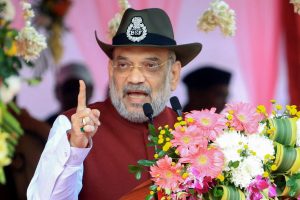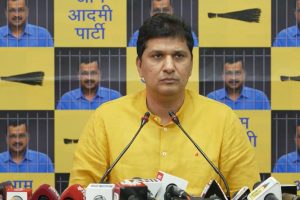When the first National Education Policy came into effect in 1968, based on the recommendations of the Kothari Commission (1964-66), it called for a radical restructuring of education. However, in its attempt to be comprehensive it generated considerable confusion. It was assumed that in 1947, there were two major streams of thought and policy-framework that could have influenced education. The first was Gandhian in which the dismantling of colonial education was of utmost importance.
During the struggle for Independence, the Mahatma not merely denounced the education system introduced by the British; he started a parallel system. The other was Nehru’s “imitation model”. He felt it was right to retain the colonial system and use it for modernisation. However, he failed to generate a movement for mass education through which he could have undermined the domination of the colonial elite.
It is generally believed that though education has expanded as an instrument of upward social mobility, yet there is something seriously wrong with the system. The more common refrain is that of stagnation and the gap between educational expansion and the needs of society. The theoretical content of education has been overloaded with the result that everyone is bewildered about the real purpose.
We are told that the objective of education is to impart reading and writing skills, and to train the analytical faculties of a child; to equip him mentally so that he can make independent judgements about problems and issues; to learn the techniques of sophisticated analysis; to prepare the youth to be strong in a world of tough competition; to be a good citizen; to preserve and enrich the Indian tradition; to absorb the challenges of the modern world; to contribute to economic development; to generate a sense of social commitment; to imbibe values which the education system thinks worth pursuing, and to help the country find a respectable place on the world map.
Education can be work-oriented in two aspects. When a student is taught the skill necessary for a certain profession, his education is in a certain sense job oriented. But education can be work-oriented in a distinctly different sense. One can feel that our education, particularly higher education, is marked by abstractions, that it ignores training of the senses to a greater extent than is good for the all-round development of the personality, and further, that it does not take enough care to acquaint students with concrete social problems. Work education may be one of the methods to address these deficiencies. This, however, is different from training a student for a job. Here the aim is to correct excessive one-sidedness in general education. In fact, work education and job-oriented training are two different disciplines. Our education policy risks being miscarried unless this is kept clearly in view.
In India, there is a rush for higher education. By diverting students from general education to the vocational during school years, the new education policy can ensure general welfare. It can benefit both the vocation and higher education. It is not the proper function of universities to prepare students for jobs. Those who graduate with medicine and engineering may indeed be eligible for jobs corresponding to their expertise. A Master’s degree may carry some weight in teaching and research. For most other jobs, there is no rational ground for preference to a university degree holder. This should be the implication of delinking jobs from degrees.
The “10+2+3” system was intended to change the system handed down unthinkingly since the days of Macaulay. The objective was two-fold-to give students a broadbased education up to class X and to vocationalise education after this stage in order to meet the needs of our overcrowded universities so that what passes as higher education may become a bit more farcical. In theory, the scheme is unexceptionable and deserves sympathy as the first genuine attempt to reform the education system. In practice, unfortunately, what was attempted was ill-conceived when account is taken of the severe limitations of facilities available and the deep-rooted socio-economic values that pervade our society.
Back in 1977, Morarji Desai told the Education Conference: “I do not know how it (10+2+3) is going to give any benefit. It has only disturbed the whole thing for the worse. This kind of change in education is not change. It only misguides the people into believing that we are making something better.”
The then Union Education Minister, PC Chunder’s earlier criticism of the system made people think that it would be given short shrift. The state education ministers too found much good in it. And after having done the traditional duty of condemning the system, the powers-hat-be decided to continue with it. Thus, it was intended to be a uniform system all over the country.
And there lies the rub. No system, not even one imported from utopia can equally suit all parts of a country with infinite diversities. The infamous 42nd Amendment by making education a concurrent list subject attempted to put education in a straitjacket. Authoritarians everywhere seek the brainwashing of the younger generation through education of their choice. Moreover, we were left to believe that there was no real change in the switch over ~ “10+2” was only a change of nomenclature from the old Matriculation and Intermediate and “+3” was the old BA lengthened by a year. Such a sacrifice of years was to be made to usher in a “radical” reform. It is doublethink to say that the Four Year Undergraduate Programme (FYUP) format proposed in the new education policy would be at once make a great change. It seems that our educational policy makers have reached a dead end – they have condemned the old system many times and they have not shown any remarkable inventiveness in devising a novel system. The new system would come not as a brand-new thing cut and dried and dropped from heaven; the format was in fact tried and scrapped in 2014, following a spat between Delhi University and the UGC.
Notwithstanding DU’s retreat to the traditional three-year programme from the ambitious FYUP, the UGC again has goofed up. However, replacement with multiple exit options is suggested. Students will have to spend an extra year which would certainly inflate the cost of the entire course and as such students from weaker sections would face difficulties in pursuing the new programme and get marginalised.
The biggest structural change called the FYUP will have implications ranging from the financial to the infrastructural, on the public character of the university as also on higher education.
The essential feature of the new format will be multiple exit points where students will have the option of leaving after 2 years with a diploma, after 3 years with a Bachelors’ degree and after 4 years with an honours degree. By introducing multiple exit points, it is feared, drop-outs will be institutionalised. Recent rise in enrollment in colleges has already created a tremendous pressure on the quality of teaching learning process. With an additional year there will be difficulty in accommodating extra numbers for many institutions.
It is also being argued that by adopting FYUP, our higher education system is aping the American system of majors and minors without preparing a climate for it. In America, two-year courses are offered by community colleges while undergraduate colleges with four-year programmes are separate. It is feared that the move is aimed at fulfilling some vested interests such as pushing the Foreign Educational Institutions (Regulation of Entry and Operations) Bill, which is pending before the Parliament. Presently, foreign universities must collaborate with Indian partners to set up shop in India.
Some time ago, there were reports as to how the government, unable to pass the bill in Rajya Sabha was looking for “backdoor entries” for these universities. The report of the National Knowledge Commission with its recommendations made over a period of three years (2007-09), points at a scenario where educational institutions should ultimately transform into self-generating entities. The proposed format will make it easier for foreign universities to become stakeholders in Indian educational institutions.
The new format may facilitate smooth transition of Indian students to graduate schools in the US without the requirement of an additional bridging year to conform to the US system. Moreover, it is the United States which pioneered the publicly-funded school education system in the West and did a lot to curb illiteracy among the masses. Also, the fact remains that American students are more innovative than those of other countries, and when they become part of the university system, they, in fact, need to get an extra year for their resources to be exploited. This is a luxury that only a developed country can afford.
As for European Union countries, in the wake of the Bologna Accord, they decided to award two types of bachelors’ degrees ~ one through the university and the other through higher polytechnics/professional colleges. They require the same number of years to complete the degree as in our country. So, does it make sense to emulate the US format?
The shocker is that with all these drawbacks, the proposed scheme has to be enacted at public expense, the executors being the custodians of public good. A new education policy is likely to be more effective if it is based on actual recognition of merit.
The writer is former Associate Professor, Department of English, Gurudus College and is presently with the Rabindra Bharati University











